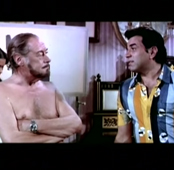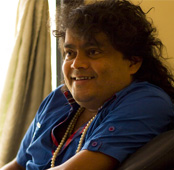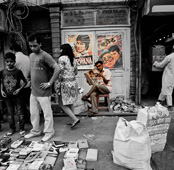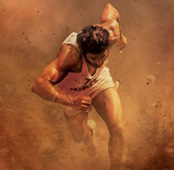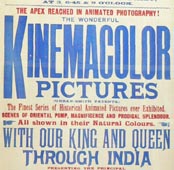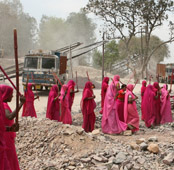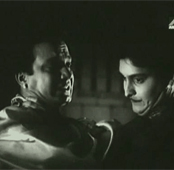-
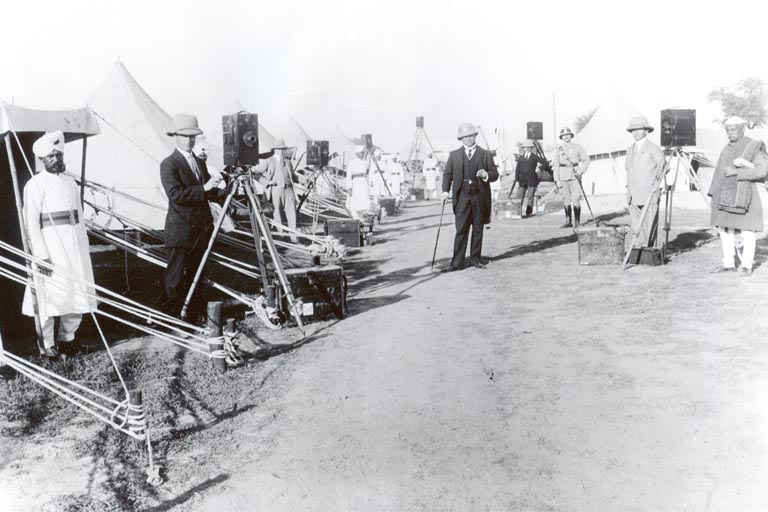 Charles Urban (centre) with the Kinemacolor camera team to film the Coronation Durbar in Delhi (Credit: Luke McKernan)
Charles Urban (centre) with the Kinemacolor camera team to film the Coronation Durbar in Delhi (Credit: Luke McKernan) -
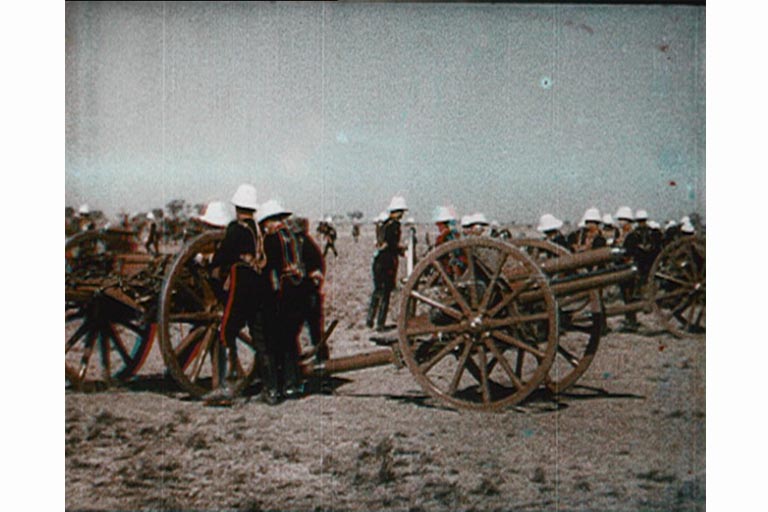 Sythesized colour image of the royal review of imperial troops at the Badli-ki-Sarai parade ground, from the surviving reel of With Our King and Queen Through India (Credit: RGAFD)
Sythesized colour image of the royal review of imperial troops at the Badli-ki-Sarai parade ground, from the surviving reel of With Our King and Queen Through India (Credit: RGAFD) -
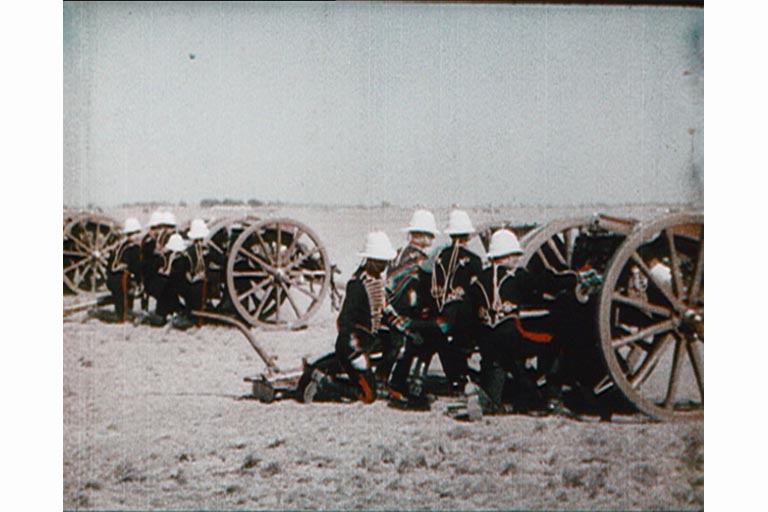 Sythesized colour image of the royal review of imperial troops at the Badli-ki-Sarai parade ground, from the surviving reel of With Our King and Queen Through India (Credit: RGAFD)
Sythesized colour image of the royal review of imperial troops at the Badli-ki-Sarai parade ground, from the surviving reel of With Our King and Queen Through India (Credit: RGAFD) -
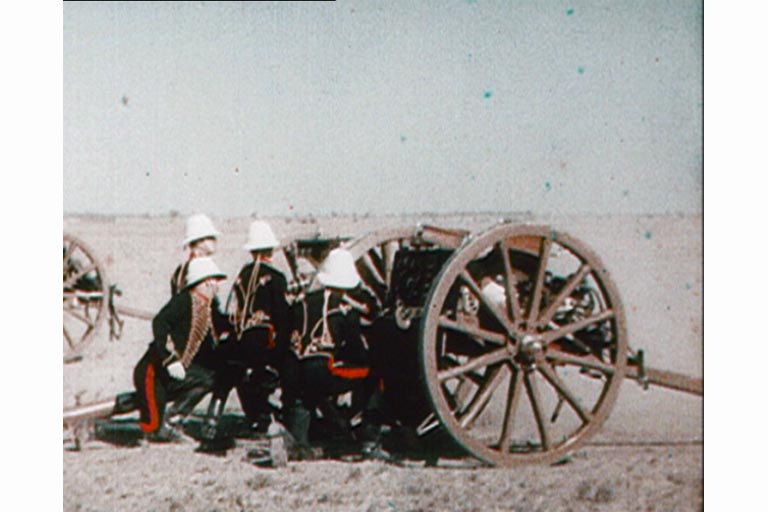 Sythesized colour image of the royal review of imperial troops at the Badli-ki-Sarai parade ground, from the surviving reel of With Our King and Queen Through India (Credit: RGAFD)
Sythesized colour image of the royal review of imperial troops at the Badli-ki-Sarai parade ground, from the surviving reel of With Our King and Queen Through India (Credit: RGAFD) -
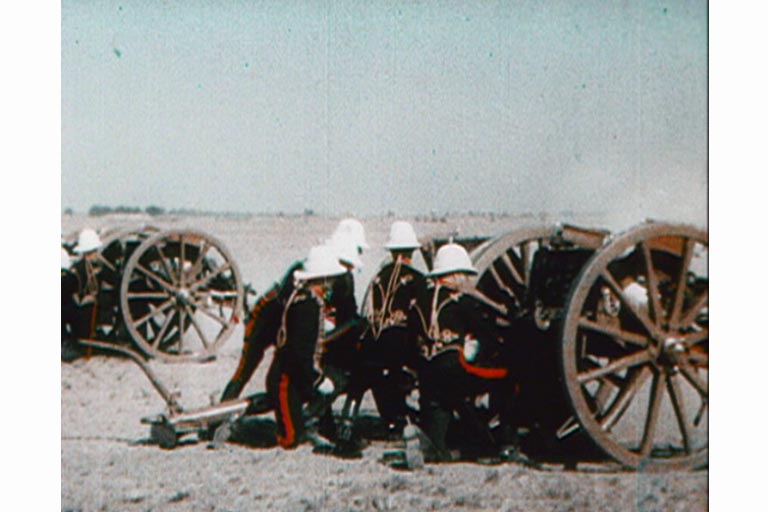 Sythesized colour image of the royal review of imperial troops at the Badli-ki-Sarai parade ground, from the surviving reel of With Our King and Queen Through India (Credit: RGAFD)
Sythesized colour image of the royal review of imperial troops at the Badli-ki-Sarai parade ground, from the surviving reel of With Our King and Queen Through India (Credit: RGAFD) -
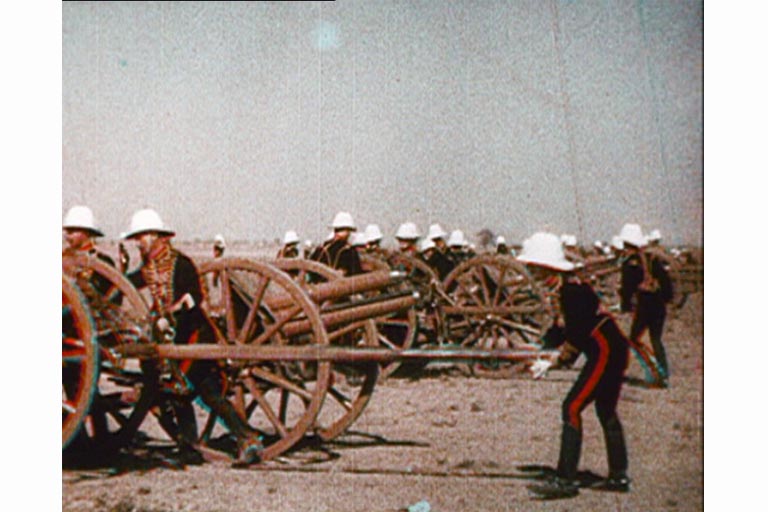 Sythesized colour image of the royal review of imperial troops at the Badli-ki-Sarai parade ground, from the surviving reel of With Our King and Queen Through India (Credit: RGAFD)
Sythesized colour image of the royal review of imperial troops at the Badli-ki-Sarai parade ground, from the surviving reel of With Our King and Queen Through India (Credit: RGAFD) -
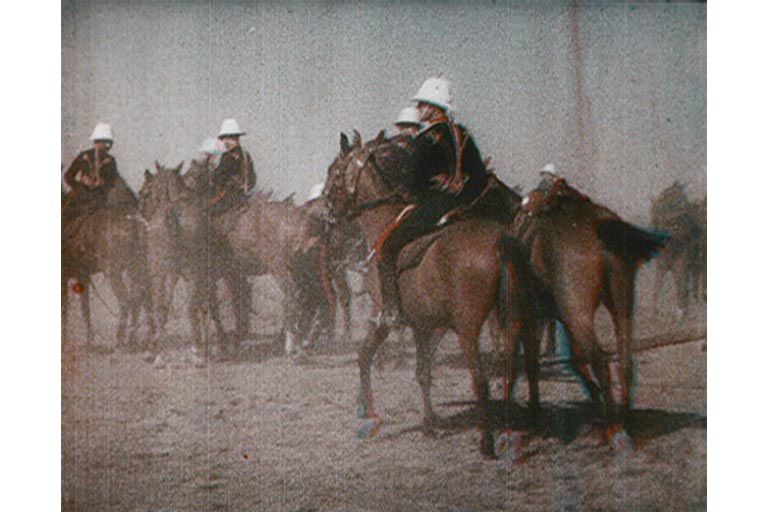 Sythesized colour image of the royal review of imperial troops at the Badli-ki-Sarai parade ground, from the surviving reel of With Our King and Queen Through India (Credit: RGAFD)
Sythesized colour image of the royal review of imperial troops at the Badli-ki-Sarai parade ground, from the surviving reel of With Our King and Queen Through India (Credit: RGAFD)
 "With Our King and Queen in India poster (Credit: Luke McKernan)"
"With Our King and Queen in India poster (Credit: Luke McKernan)" The world’s first colour blockbuster was actually filmed at the Coronation Durbar in Delhi, as far back as 1911. But its reels were missing till 2000. Raghu Karnad pieces together the story of the film and its maker.
In 1981, in the approach to Doordarshan’s first colour telecast, the Union Minister for Information Vasant Sathe announced, “Black and white is a dead technology. Dead like a dodo.” Three years later, Rajiv Gandhi was the darling of the middle classes, according to India Today, for being the first Prime Minister “who understands the importance of colour TV”. The final triumph of the moving image in colour has been declared many times, in many places around the world. But it was in Delhi in 1911 that colour cinematography made its first and perhaps most confident promise to end the age of black-and-white pictures.
The story of Charles Urban at the Coronation Durbar is usually overlooked in histories of film. Urban used his Kinemacolor process to record the events of the Durbar, the cresting moment of the British Empire and its greatest visual spectacle. With Our King and Queen through India became the first colour cinematography – or film of any sort – that most Western audiences had laid eyes on. The film elevated the “picture show”, a cheap thrill for the working classes, into an entertainment suitable for the most shimmering sections of world society, including the British royal family, the Pope and the Emperor of Japan. Yet within a few years, the footage had disappeared, and it wasn’t until 2000 that one reel was recovered, in the Russian town of Krasnogorsk. Ten minutes is all that is left of the most grandiose and course-altering production in the first generation of natural-colour films.
In the first decade of the twentieth century, the sole technology for colour films involved painting dyes onto the filmreel. In 1906, GA Smith patented a camera and projection technology with two filters, red and green, that captured the natural colour of light. He called it Kinemacolor (a reminder of the origin of the word “cinema” in the Greek root for “movement”).
Charles Urban was an associate of Smith’s, and a man who did not lack imagination about the eventual role of Kinemacolor, or of himself, in how the world viewed the world. Urban recognised that if this regal new motion-picture technology was linked to a regal subject, Kinemacolor films would be more like the theatre than the picture-shows: genteel, desirable and also lucrative. Urban began recording royal outings. In 1909, King Edward VII was shown a Kinemacolor film of himself and reportedly said, “Very good, very good.” An even better film was recorded when the King died the next year, and the colour newsreel of the funeral caught the public’s interest. According to Luke McKernan, film curator at the British Library, Urban was brilliantly equating fidelity to nature (through colour) with fidelity to the Crown, an unbeatable combination in the peak years of the Empire.
The association of Kinemacolor with royal extravaganza was built up through the unveiling of the Victoria Memorial (when the Kinemacolor catalogue trumpeted: “No one can henceforth regard monotone pictures of the glories of pageantry as anything but obsolete and unsatisfying,” that is, dead as a dodo) and later the coronation of George V. But it was when Lord Hardinge hosted the new King-Emperor at the ancient capital of Delhi that Urban would shoot his greatest film.
Five firms received permission to shoot “featured actualities” – what we’d now call documentary footage – at the Coronation Durbar. Of course, Urban’s team was the only one shooting in colour, and he nursed paranoid fantasies of sabotage. Urban later claimed that each day’s negatives were boxed, buried in the sand with a rug on top, his bed on the rug and his pistol under the pillow. The footage followed the King and Queen from their disembarkation at the Apollo Bunder in Mumbai (later the site of the Gateway of India). They entered Delhi between the stone elephants at the gate of Salimgarh Fortress, just north of Lal Qila. The actual Durbar was a series of parades and proclamations, which culminated with the Emperor making two announcements: one annulling the partition of Bengal, the other proclaiming the relocation of the capital to Delhi.
The scale of the Durbar would be difficult to believe if it hadn’t been thoroughly filmed and photographed (filmed by some of India’s first cinematographers and photographed by everyone – like today, there were complaints about guests bringing their Eastman Kodaks). Between the pomp of the assembled maharajahs, the shining brass of 34,000 soldiers, the Viceregal entourage and the Imperial retinue itself (the King wore a little something called the Imperial Crown of India, set with 6,100 diamonds), Urban couldn’t have asked for more natural colour to record. After it all wound up, the monochrome film teams raced each other back to Britain, each needing to be the first to screen their footage. But Urban remained at his leisure and filmed the military review at the Badli-ki-Sarai, which would prove to be a good thing. Later, he rejoined the Imperial tour in Calcutta.
Back in London, With Our King and Queen through India was screened throughout 1912 as a 150-minute programme, the longest film-show to that date, accompanied by a 48-piece orchestra, a 24-person choir and a full fife-and-drum corps. “The film was raputurously received in Britain,” McKernan said via email. “It received similar acclaim worldwide.” He points to a review in the film trade paper The Bioscope, which “sums up the feeling many had on seeing it”. The review reads: “Men and women yet unborn,…by the magic of a little box and a roll of film, will be enabled to witness the marvels of a hundred years before their age, in all the colour and movement of life…Man has conquered most things; now he has vanquished Time.”
Famous last words. In 1913, the Kinemacolor patent was defeated in court. Urban’s company was liquidated and its holdings – including its film library – sold off. Kinemascope reels required special projectors, without which they couldn’t be viewed. “The film ‘disappeared’ from general consciousness soon after the start of the First World War,” McKernan said. Since then, Urban’s role in cinematographic history has been underrated. “With Our King and Queen Through India’s importance to film history is social rather than purely cinematic,” McKernan explained. “[Urban’s] great contribution to film as record, as an educational medium, and to film’s social status isn’t recognised.” The Durbar footage itself was lost: vanquished, quite efficiently, by time.
Among many other effects, the filming of the Darbar created an Indian tradition of filming political extravaganzas. Baburao Painter shot The Congress Session in Bombay in 1919, and thereafter every Congress session was filmed. Gandhi alone was a walking cottage industry for filmmakers.
Still there was no sign and little recollection of Urban’s pioneering footage. Until 2000, when the filmmaker Adrian Wood was researching a documentary series on the British Empire. Wood caught wind of a stray fact, that Urban had had a franchise in Tsarist Russia and that some pre-revolutionary materials might survive in the Russian state archive in Krasnogorsk. Along with Victor Belyakov, a local producer, he unearthed a number of reels of Indian troops.
In the fourth reel, something titled With Our Indian Troops Now Serving in France, Wood recognised the flicker of a Kinemacolor film. “It clearly showed a military parade (at Badli-ki-Sarai) that formed part of the Durbar celebrations,” Wood said, in an email. “It had been repurposed to show Russians their British Empire allies fighting against German forces in WWI.” No more was found. But we do have a glimpse of the world’s original colour blockbuster, and through it the event, in all its imperial hues, that sounded the modern rebirth of Delhi.
This article first appeared in TimeOut Delhi’s December 11-24, 2009 issue.
The Delhi Durbar in Full Colour
ArticleMarch 2014
 By Raghu Karnad
By Raghu Karnad
Raghu Karnad (@rkarnad) has worked as a reporter at Outlook and Tehelka, and is a former editor of Time Out Delhi. His articles have also appeared in The Caravan, The Financial Times and the journal n+1.



